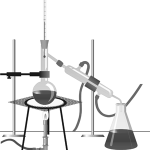Come the holidays, whether they realize it or not, a lot of folks quietly, or not so quietly in the case of working smoke detectors, become budding chemists. And while the lab coat and beakers may take the form of aprons and measuring cups, baking can be highly dependent on the proper chemistry to ensure a palatable product.
Most baking recipes involve some combination of baking soda and / or baking powder, both of which primarily act as leavening agents. These agents typically produce tiny CO2 bubbles that are trapped within the batter causing it to rise. Baking soda (NaHCO3), also known as sodium bicarbonate, interacts with acidic ingredients such as milk, vinegar, chocolate, citrus juice, and cream of tartar to complete the reaction. Baking powder similarly contains sodium bicarbonate, but also contains an acidifying agent such as cream of tartar to ensure the proper acid / base balance in the ingredients.
Baking powder is interesting in that it comes in two general forms: single acting and double acting. This generally refers to when the reaction starts to take place. When using baking soda and single acting powder, the reaction occurs when moisture is added, and as such, needs to be put in the oven quickly before the batter flattens. Double acting powder on the other hand releases some gas when moisture is added, but releases the majority of it when it reaches temperature in the oven.
So which do you use? It depends on the ingredients in whatever is being cooked. To achieve the best taste, a cook will try and precisely balance the acidic ingredients in the recipe while still achieving the proper leavening. If a food is too acidic, it will taste bitter when eaten.
Happy Holidays and New Year to all who have been reading along during this first year. Will be back next year with more information and do it yourself science.
